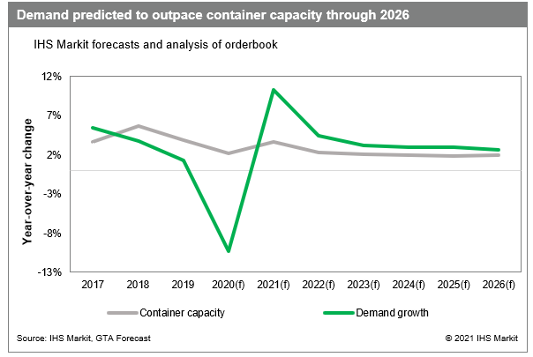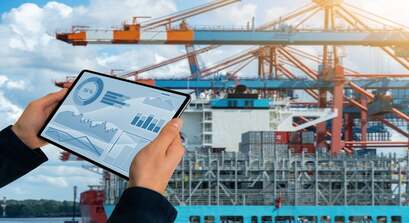The future of the digital supply chain is going to be in handling vastly larger volumes of cargo with less manual labor.
Who buys more than they can consume? This is the statement / question voiced by Kathryn Farmer, CEO of the BNSF Railway, in her appearance before the Surface Transportation Board last week. It is a good question as the industry looks at the bottlenecks of cargo all along the global supply chain. We asked the Journal of Commerce · IHS Markit about this comment to dig in more deeply. A representative told us that on average importers were holding containers for 14 days before returning the empty.
We asked what causes the delays and we were informed that the warehouses simply did not have the capacity to unload the inventory in the containers at the speed necessary to accomplish live unloads. This was a surprise to hear that after all the delays to get on a ship and the delays in transit and lastly, battling with the railroads to get the container out of the rail terminal the warehouses could not immediately unload the containers.
So, Kathryn Farmer’s question remains “Who orders more than they can consume?”. Clearly, the US consumer base does, and it appears that many are now predicting that this trend will continue into the longer future.
IHS Markit reports that they don’t see demand outpacing supply until 2026.

At the same time, the carriers have an unprecedented number of new ships on order while new container inventory is rapidly coming online. But these growths in carrying capacity will not change the environment if there is not a substantial investment in terminal capacity, rail capacity, trucking capacity, and warehouse capacity. That is a lot of change to adjust to a new normal in freight volumes.
This new normal in freight volumes begs the question of whether or not current processes and systems will support these transactional volumes or whether supply chain administration will become the next big bottleneck.
Continued large increases in volumes will exacerbate all current weaknesses in the logistics administrative process. If users are spending a lot of time reentering shipment data on multiple systems and sites, then this will become much worse. If tracking cargo is a problem right now, it will become much worse as the volumes increase. Large volumes threaten inefficient systems.
If these new volumes are the future, then the digital future needs to be a system where both origin and destination can work together on the same shipment file. Where data is never reentered in outside systems but is connected or fed to outside systems and cargo tracking is automated and seamless. The next step after this will be automation at a variety of operational levels to reduce the steps that are repeated with each shipment and are patterned based rather than fluid situations that require problem solving.
Examples of steps that could be automated are warehouse scheduling, container pick-up and delivery scheduling, Customs Clearance, and accounting. These are all pattern-based steps where a combination of on-line collaboration with a key party, or a predictable assignment of orders can be applied. Customs Clearance is probably the single more automatable process for an integrated PO Management and Shipment Management environment can work. Importers bring in the same inventory week after week. The differences are around the shipment details and not the SKU classifications or duty applications. And Customs Clearance is 100% rules based. This is where systems accel.
Accounting, like Customs Clearance, is rules based. This set of steps too should be automated at least at the accrual level with costs being automatically calculated and accrued and invoices generated and transmitted. Pricing and Costing integration in the overall process is critical for this automation but then, provides the rules that enable automated calculations.
The future of the digital supply chain is going to be in handling vastly larger volumes of cargo with less manual labor. The human factor will not go away, but it will shift to planning, system adjustments, problem solving, and customer service.



